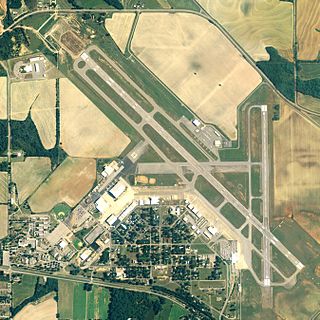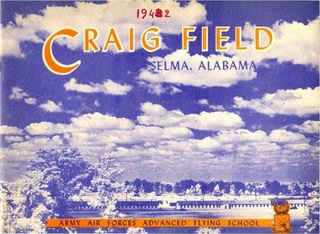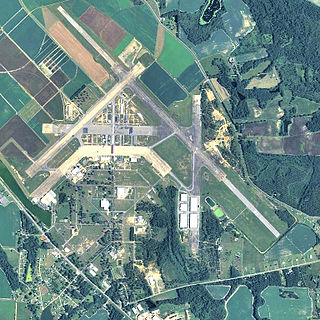Related Research Articles

The British Commonwealth Air Training Plan (BCATP), or Empire Air Training Scheme (EATS) often referred to as simply "The Plan", was a massive, joint military aircrew training program created by the United Kingdom, Canada, Australia and New Zealand, during the Second World War. BCATP remains as one of the single largest aviation training programs in history and was responsible for training nearly half the pilots, navigators, bomb aimers, air gunners, wireless operators and flight engineers who served with the Royal Air Force (RAF), Royal Navy Fleet Air Arm (FAA), Royal Australian Air Force (RAAF), Royal Canadian Air Force (RCAF) and Royal New Zealand Air Force (RNZAF) during the war.

The Air Training Corps (ATC) is a British volunteer-military youth organisation. They are sponsored by the Ministry of Defence and the Royal Air Force. The majority of staff are volunteers, and some are paid for full-time work – including Commandant Air Cadets, a Full Term Reserve Service RAF officer. Although many ATC cadets go on to join the RAF or other services, the ATC is not a recruiting organisation for its parent service.

Gunter Annex is a United States Air Force installation located in the North-northeast suburbs of Montgomery, Alabama. The base is named after former Montgomery mayor William Adams Gunter. Until 1992 it was known as Gunter Air Force Base or Gunter Air Force Station. It has been a military training base since its opening in 1940.

Dothan Regional Airport is a public airport in Dale County, Alabama, United States, seven miles northwest of Dothan, a city mostly in Houston County.

Southwest Georgia Regional Airport is an airport four miles southwest of Albany, in Dougherty County, Georgia, in the United States. The National Plan of Integrated Airport Systems for 2011–2015 categorized it as a primary commercial service airport. Federal Aviation Administration records say the airport had 39,200 passenger boardings (enplanements) in calendar year 2008, 33,044 in 2009 and 35,494 in 2010.

Tuskegee Airmen National Historic Site, at Moton Field in Tuskegee, Alabama, commemorates the contributions of African-American airmen in World War II. Moton Field was the site of primary flight training for the pioneering pilots known as the Tuskegee Airmen, and is now operated by the National Park Service to interpret their history and achievements. It was constructed in 1941 as a new training base. The field was named after former Tuskegee Institute principal Robert Russa Moton, who died the previous year.

The Civilian Pilot Training Program (CPTP) was a flight training program (1938–1944) sponsored by the United States government with the stated purpose of increasing the number of civilian pilots, though having a clear impact on military preparedness.

Craig Air Force Base near Selma, Alabama, was a U.S. Air Force undergraduate pilot training (UPT) installation that closed in 1977. Today the facility is a civilian airport known as Craig Field Airport and Industrial Complex.
Volunteer Gliding Squadrons (VGSs) are Royal Air Force (UK) Flying Training units, operating military Viking T1 conventional gliders to train cadets from the Royal Air Force Air Cadets.
The Royal Air Force Volunteer Reserve (RAFVR) was established in 1936 to support the preparedness of the U.K. Royal Air Force in the event of another war. The Air Ministry intended it to form a supplement to the Royal Auxiliary Air Force (RAuxAF), the active reserve for the RAF, by providing an additional non-active reserve. However during the Second World War the high demand for aircrew absorbed all available RAuxAF personnel and led the RAFVR to quickly become the main pathway of aircrew entry into the RAF. It was initially composed of civilians recruited from neighbourhood reserve flying schools, run by civilian contractors with largely RAF-trained flying instructors as well as other instructors in related air war functions, such as observers and wireless operators.

Sharpe Field is a closed private use airport located six nautical miles northwest of the central business district of Tuskegee, a city in Macon County, Alabama, United States. This airport is privately owned by the Bradbury Family Partnership.
The Clayton Knight Committee, was founded by Billy Bishop and Clayton Knight in 1940. Homer Smith and several German émigrés, who wanted America to join the war against the Axis powers, provided funding for the secret and unlawful commissioning agency. Its mission was to bring Americans to Canada in order to prepare and battle for the Allies while the US was still neutral. By Canada allowing the training to take place on their soil, it is considered the most important contribution it made to the Allied air war. This was before the US declared war on Japan and Germany. The committee was forced to defend itself from opposing forces such as, "pacifists and isolationists, the Federal Bureau of Investigation, and President Franklin D. Roosevelt."
Royal Air Force Kirton in Lindsey or more simply RAF Kirton in Lindsey is a former Royal Air Force station located 15 miles (24 km) north of Lincoln, Lincolnshire, England.

Terrell Municipal Airport is a public access airport located within the city limits of Terrell, Texas, 1 mile SE of central Terrell.

Avenger Field is a Texas airport in Nolan County, three miles west of Sweetwater. The National Plan of Integrated Airport Systems for 2011–2015 called it a general aviation facility.

Spence Air Base was a United States Air Force base that operated from 1941 to 1961. It was later reopened as Spence Airport.

The United States Army Air Forces during World War II had major subordinate Commands below the Air Staff level. These Commands were organized along functional missions. One such Command was the Flying Training Command (FTC). It began as Air Corps Flying Training Command on 23 January 1942, was redesignated Army Air Forces Flying Training Command (AAFTC) on 15 March 1942, and merged with Army Air Forces Technical Training Command to become Army Air Forces Training Command on 31 July 1943. Continuing service after the war, it was redesignated Air Training Command on 1 July 1946. During the consolidation of Air Force Major Commands in the retrenchment of the 1990s, Air Training Command assumed control of Air University and became Air Education and Training Command on 1 July 1993—today's Air Education and Training Command (AETC), which celebrated its 75th anniversary 23 January 2017. see the Lineage and honors statement for AETC.

Souther Field is a former military airfield, located 3.7 miles (6.0 km) Northeast of Americus, Georgia. It was one of thirty-two Air Service training camps established after the United States entry into World War I in April 1917.

During World War II civilian flying schools, under government contract, provided a considerable part of the flying training effort undertaken by the United States Army Air Forces.

Flying Division, Air Training Command, was a training formation of the United States Air Force. The unit was established in 1926 as the Air Corps Training Center to be the primary pilot training center for the Air Corps. It was reorganized into one of three training commands created by the Office of the Chief of the Air Corps in 1940 to accommodate the large number of air cadets being recruited as a result of the expansion of the corps after the fall of France. During World War II, thousands of cadets attended various flight schools throughout the Central United States being trained as pilots for fighters, bombers and transports. It also trained the navigators, bombardiers and gunners necessary for the bombers to attack enemy targets in the combat areas overseas. After World War II, it became the primary pilot and aircrew training unit of the United States Air Force Air Training Command.
References
- ↑ Guinn, Gilbert S. (2007). The Arnold Scheme. The History Press, Charleston, South Carolina. p. 42.
- ↑ Guinn, p. 43.
- ↑ Churchill, Winston S. (1950). The Second World War: Volume 3 The Grand Alliance: Appendix C to Book One. Houghton Mifflin Company, Boston. p. 764.
- ↑ "Arnold Scheme". Official Website of The Arnold Scheme (1941-1943) Register. 27 March 2013. Archived from the original on 3 March 2016. Retrieved 30 January 2016.
- ↑ "Transcript of interview with Wing Commander Stanley Kirtley, member of Arnold scheme Class SE-42-D". 2006. Retrieved 30 January 2016.
- ↑ Guinn, pp. 529–540, Appendix I.
- ↑ Guinn, p. 541, Appendix I.
- ↑ "Daily Telegraph obituary". 27 October 2015. Retrieved 3 February 2016.